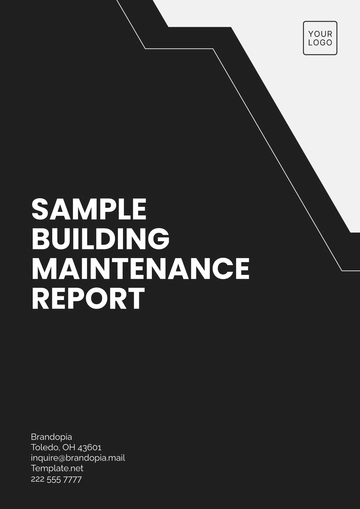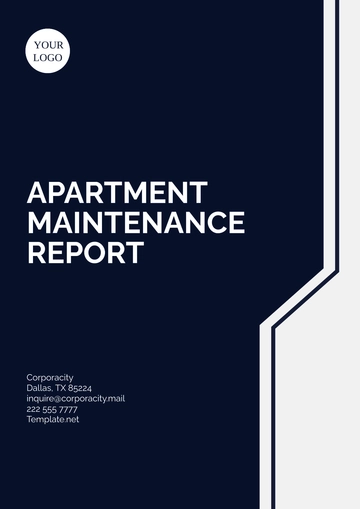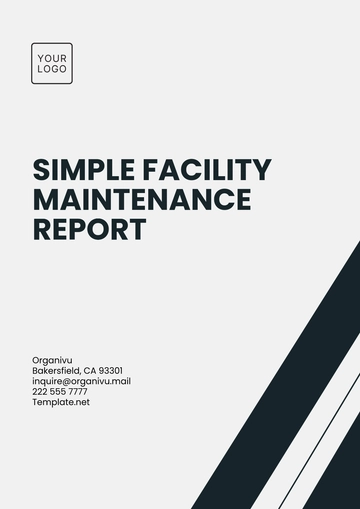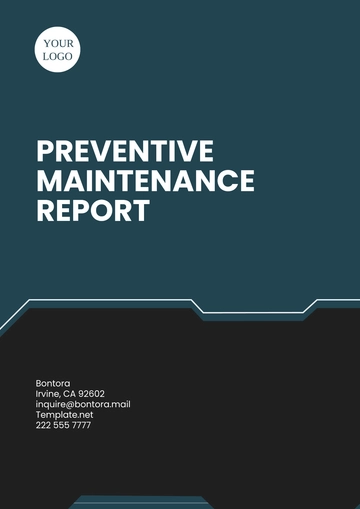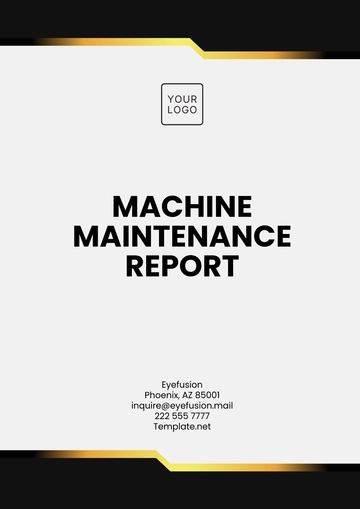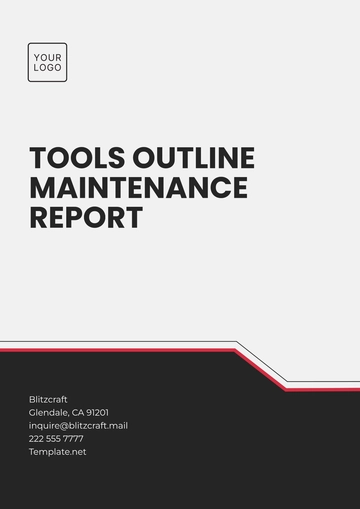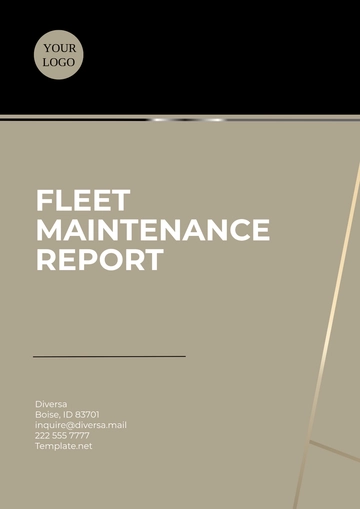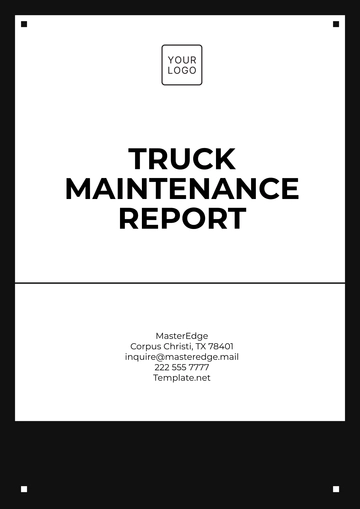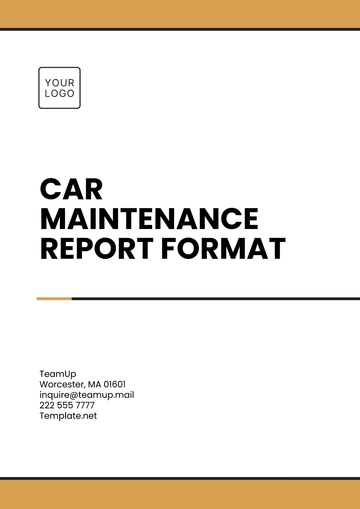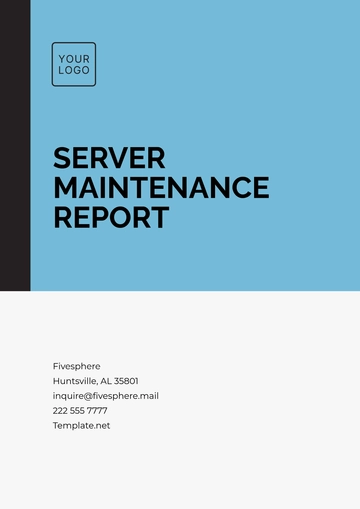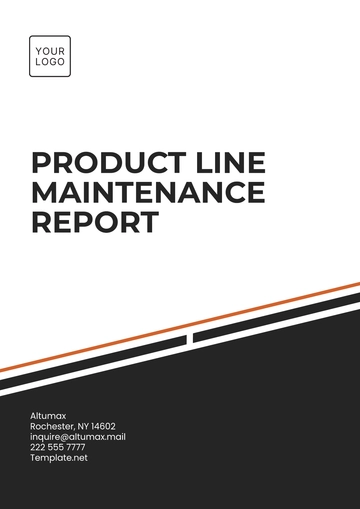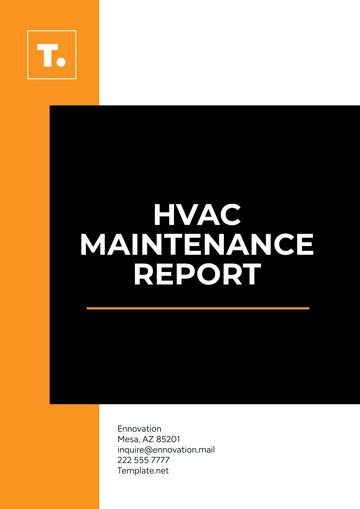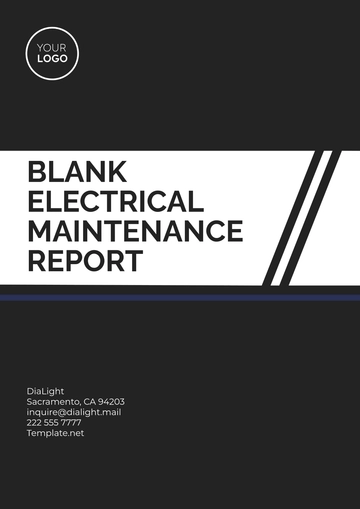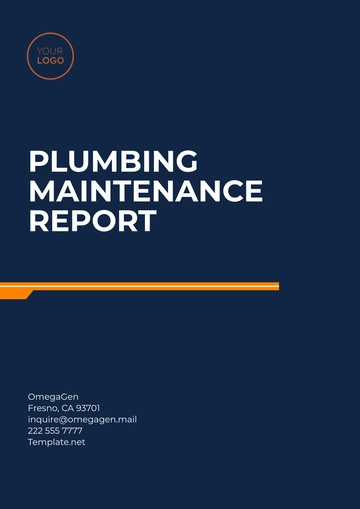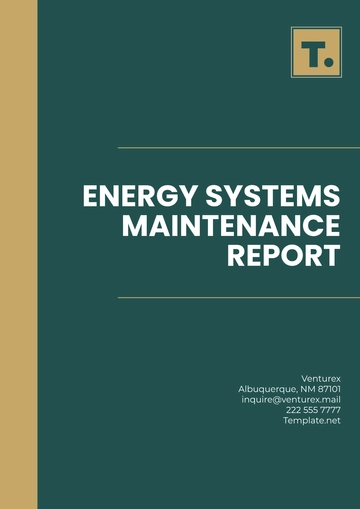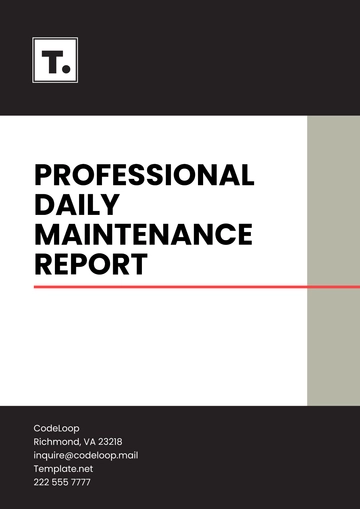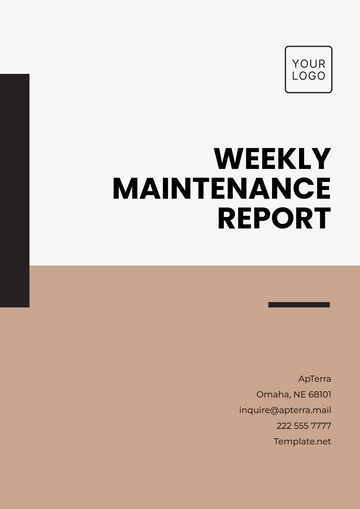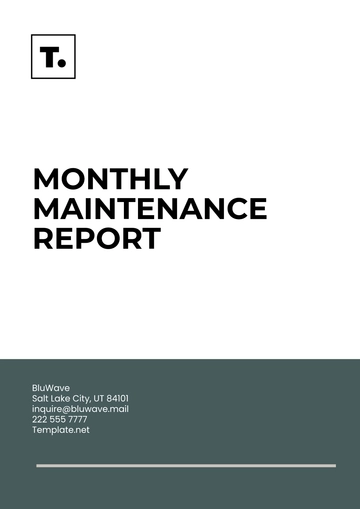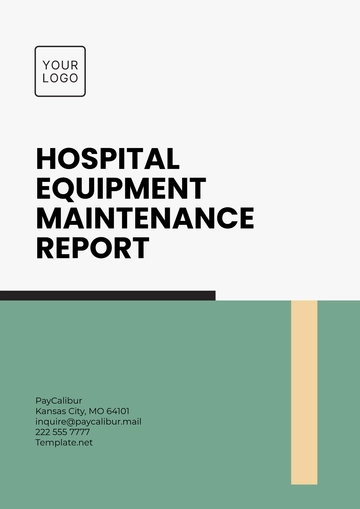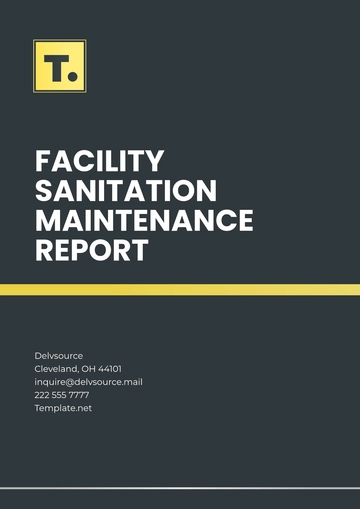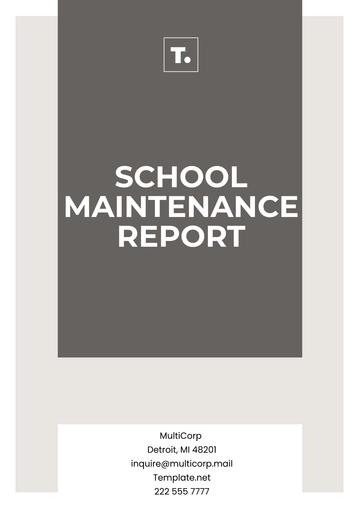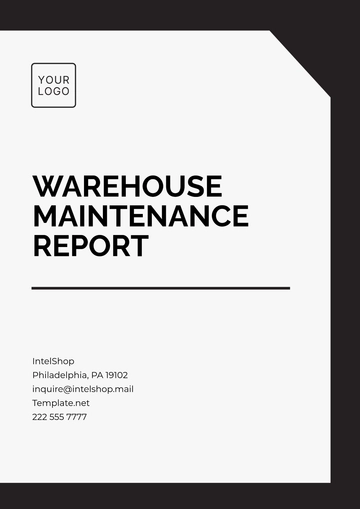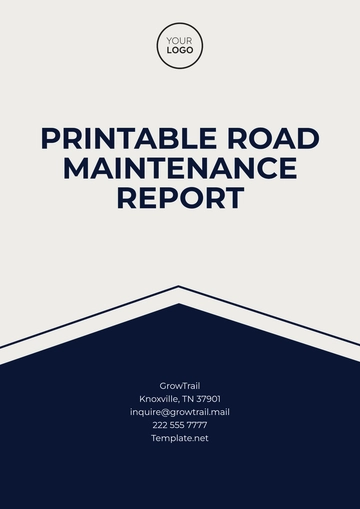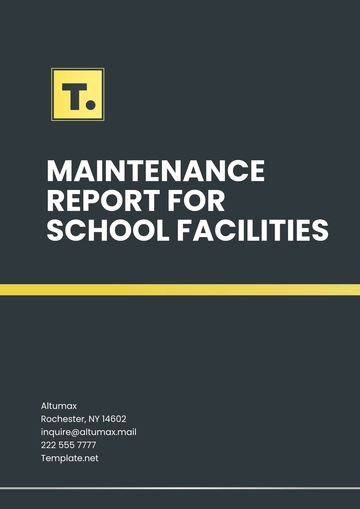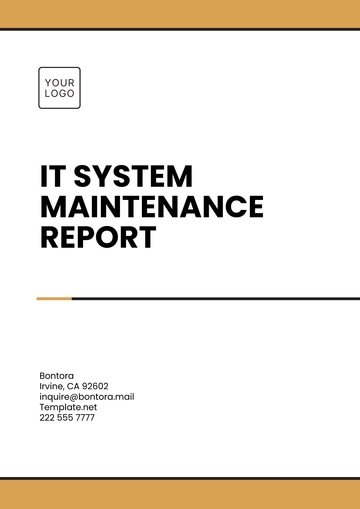Free Aircraft Monthly Maintenance Inspection Report

Prepared by | Company |
|---|---|
[Your Name] | [Your Company Name] |
I. Aircraft Information
Attribute | Details |
|---|---|
Aircraft Registration | N12345 |
Aircraft Type | Boeing 737-800 |
Manufacturer | Boeing |
Engine Type | CFM56-7B |
Engine Serial Number | 12345-67890 |
II. Maintenance Personnel
Role | Name/ID |
|---|---|
Maintenance Engineer | John Smith / ID: ME-123 |
Inspection Technician | Emily Johnson / ID: IT-456 |
Quality Assurance Officer | Michael Brown / ID: QA-789 |
III. Date and Duration
Date of Inspection | Duration |
|---|---|
June 15, 2054 | 8 hours |
IV. Maintenance Summary
A. Routine Checks
During the inspection conducted on June 15, 2054, the maintenance team performed a series of routine checks essential for ensuring the airworthiness and operational readiness of the Boeing 737-800 aircraft. Visual inspections were conducted meticulously across critical areas, including the fuselage, wings, and control surfaces. The landing gear was carefully examined for signs of wear and hydraulic systems checked for any potential leaks.
B. Repairs and Replacements
A notable finding during the inspection was the identification of cracks on the left-hand side landing gear strut. In response, the maintenance team promptly replaced the affected strut to mitigate any safety risks associated with structural integrity. Additionally, a repair was carried out on the cabin pressure control valve to address intermittent pressurization issues reported by flight crew members.
C. Adjustments
To optimize operational efficiency and ensure peak performance, adjustments were made to engine thrust settings according to manufacturer specifications. The autopilot system parameters were calibrated meticulously to maintain precision and reliability during flight operations.
V. Findings and Observations
Finding/Observation | Action Taken |
|---|---|
Small oil leak observed near engine #2 | Tightened fittings and monitored closely |
Excessive wear on brake pads | Replaced brake pads |
VI. Recommendations
A. Immediate Actions
As a precautionary measure, it is recommended to replace the starter motor of engine #1 before the next scheduled flight to avoid any potential operational disruptions. Additionally, a detailed inspection of the hydraulic system is advised to detect and rectify any potential leaks that could compromise system integrity.
B. Preventive Measures
To enhance operational safety and reliability, it is proposed to implement a more frequent inspection schedule for brake system components. Furthermore, upgrading the cockpit avionics software to the latest version is recommended to leverage advanced functionalities and improve overall system performance.
C. Long-Term Planning
In consideration of future maintenance strategies, it is suggested to evaluate the feasibility of upgrading engines to newer models that offer improved fuel efficiency and reduced environmental impact. Monitoring trends in fuselage corrosion will also be crucial for planning proactive measures to prevent structural deterioration over the aircraft's operational lifespan.
VII. Compliance Statements
A. Regulatory Compliance
The maintenance activities conducted during the inspection adhered strictly to the Federal Aviation Administration (FAA) Airworthiness Directives AD 2054-001 through AD 2054-010, ensuring full compliance with regulatory requirements. Furthermore, all procedures were performed by the guidelines outlined in Boeing Maintenance Manual Section 2, Revision 5, to maintain the aircraft's airworthiness and operational safety.
B. Certification
This Aircraft Monthly Maintenance Inspection Report is certified by John Smith, Maintenance Engineer (ME-123), and approved by Michael Brown, Quality Assurance Officer (QA-789). Their signatures affirm the accuracy and completeness of the maintenance records documented in this report.
C. Documentation Completion
To maintain comprehensive and accurate maintenance records, all updates and findings have been diligently recorded in the aircraft's maintenance logbook for June 2054. Furthermore, electronic copies of this report have been securely filed in the company's Maintenance Information System (MIS) to ensure accessibility for future audits and regulatory inspections.
VIII. Conclusion
The diligent execution of maintenance tasks and adherence to regulatory standards have ensured that the Boeing 737-800 aircraft remains in optimal condition for safe and reliable flight operations. Continuous monitoring and proactive maintenance planning will be essential to sustain this high standard of airworthiness and operational integrity in the future.
- 100% Customizable, free editor
- Access 1 Million+ Templates, photo’s & graphics
- Download or share as a template
- Click and replace photos, graphics, text, backgrounds
- Resize, crop, AI write & more
- Access advanced editor
Ensure compliance and streamline your aircraft maintenance with Template.net's Aircraft Monthly Maintenance Inspection Report Template. This customizable and editable template is designed to meet aviation standards, offering ease of use and efficiency. Fully editable in our Ai Editor Tool, it allows you to tailor the report to your specific needs, ensuring accurate and comprehensive documentation every time.
You may also like
- Sales Report
- Daily Report
- Project Report
- Business Report
- Weekly Report
- Incident Report
- Annual Report
- Report Layout
- Report Design
- Progress Report
- Marketing Report
- Company Report
- Monthly Report
- Audit Report
- Status Report
- School Report
- Reports Hr
- Management Report
- Project Status Report
- Handover Report
- Health And Safety Report
- Restaurant Report
- Construction Report
- Research Report
- Evaluation Report
- Investigation Report
- Employee Report
- Advertising Report
- Weekly Status Report
- Project Management Report
- Finance Report
- Service Report
- Technical Report
- Meeting Report
- Quarterly Report
- Inspection Report
- Medical Report
- Test Report
- Summary Report
- Inventory Report
- Valuation Report
- Operations Report
- Payroll Report
- Training Report
- Job Report
- Case Report
- Performance Report
- Board Report
- Internal Audit Report
- Student Report
- Monthly Management Report
- Small Business Report
- Accident Report
- Call Center Report
- Activity Report
- IT and Software Report
- Internship Report
- Visit Report
- Product Report
- Book Report
- Property Report
- Recruitment Report
- University Report
- Event Report
- SEO Report
- Conference Report
- Narrative Report
- Nursing Home Report
- Preschool Report
- Call Report
- Customer Report
- Employee Incident Report
- Accomplishment Report
- Social Media Report
- Work From Home Report
- Security Report
- Damage Report
- Quality Report
- Internal Report
- Nurse Report
- Real Estate Report
- Hotel Report
- Equipment Report
- Credit Report
- Field Report
- Non Profit Report
- Maintenance Report
- News Report
- Survey Report
- Executive Report
- Law Firm Report
- Advertising Agency Report
- Interior Design Report
- Travel Agency Report
- Stock Report
- Salon Report
- Bug Report
- Workplace Report
- Action Report
- Investor Report
- Cleaning Services Report
- Consulting Report
- Freelancer Report
- Site Visit Report
- Trip Report
- Classroom Observation Report
- Vehicle Report
- Final Report
- Software Report

